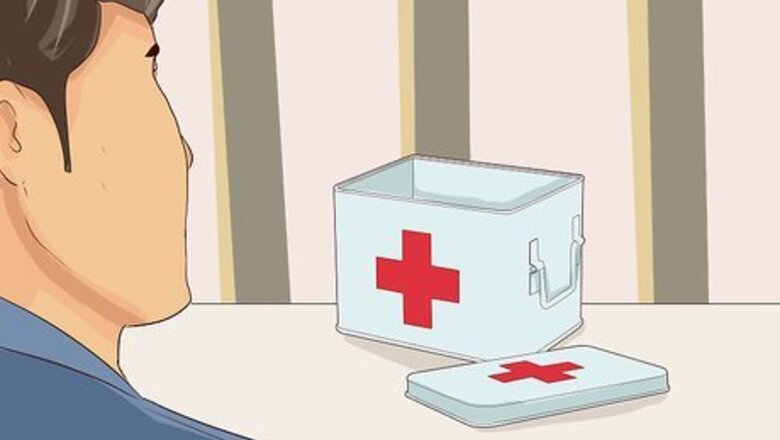
views
Choosing, Locating, and Maintaining Your Kit
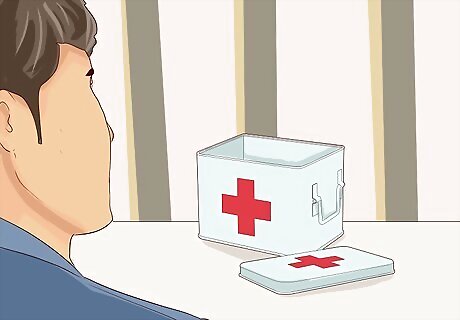
Pick a good container. You can buy pre-filled first aid kits, and you can also buy empty first aid kit containers. But you almost certainly already have a perfectly good first aid kit container in your home. One good option is a large, translucent, water-resistant, rigid or flexible plastic container with either a zipper closure or a latch-top lid. This makes the materials inside visible for easy identification. For a larger first aid kit with more items inside, a backpack or small duffel bag can suffice Lunchboxes are also another good option. Basically, if it is roomy, easily-accessible, portable, and at least somewhat water resistant, it can make a decent first aid kit container. It should be easy to transport as needed to the emergency, so a handle is ideal. You'll also want to be able to separate items by type within the kit so you can find them easily. Labeled zip-close bags are a good option for a non-rigid container especially. For a lunchbox or other rigid container, look for smaller, clear plastic containers like those available for crafting supplies, or even disposable food storage containers with snap-on lids. Regardless of your container choice, clearly identify it — for instance, by writing “FIRST AID” with a permanent marker in multiple locations.
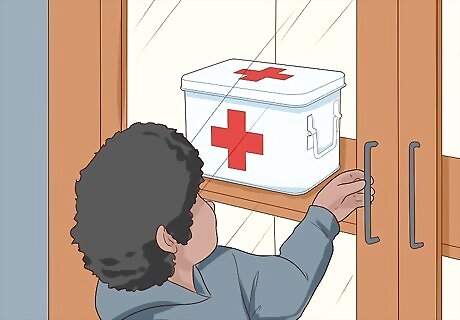
Make your kit safely accessible. When your child is crying about a "boo-boo" on her knee, you don't want your home kit buried on the back of a closet or lost because it's not being returned to the same spot after each use. Establish a clearly-defined, consistent spot for your first aid kit, on a visible / accessible linen closet shelf, for instance, and inform everyone in your home of its location. Let small children know where the kit is located, but place it where they cannot access it.

Teach your family about the kit. Make sure everyone in your home who is old enough to understand the function of a first aid kit knows its location and when to retrieve it. For younger children who shouldn’t yet try to use the items in the kit, teach them where it is located, so they could show a visitor, relative, babysitter, etc. But place the kit in a location where small children can not access it, such as on a high shelf. For older children and adults, instruct them on when to retrieve the kit and how to use the various items in it. Use a first aid instruction booklet, like those available from the American Red Cross, for guidance and place a booklet in the kit for reference.
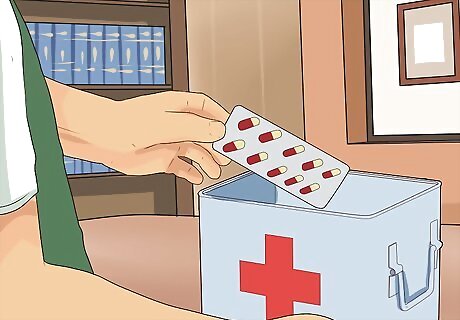
Keep your kit up-to-date. No one wants to fetch a first aid kit and find the bandage box empty or the pain relievers expired. Keep track of supply amounts and expiration dates regularly. You’ve probably heard that you should check / replace the batteries in your smoke detectors when Daylight Saving Time begins and ends in the Spring and Fall. This would also be a good opportunity to check the status of your first aid kit and restock it as needed.
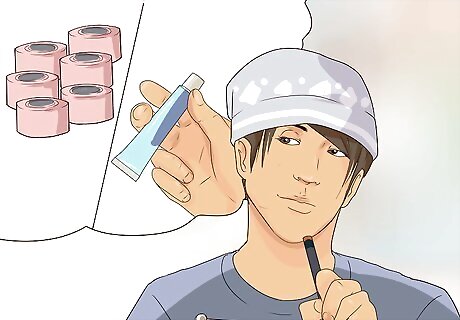
Create a checklist to include with the kit. Drawing from the suggestions made in Part 2 of this article, stock your first aid kit and record every item on a sheet of paper you can keep it in the kit. Record amounts (10 small bandages, for example) and expiration dates (for medications or ointments) next to the listed items on the checklist you include in your kit. You want anyone who retrieves the kit to immediately know what it includes and does not include, and that items are ready-to-use.
Stocking Your Kit
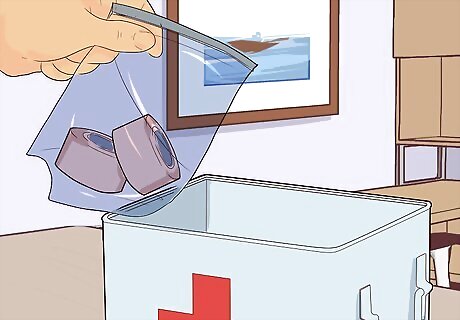
Include an array of bandages. One of the essentials when dealing with minor cuts and scrapes, is a variety of sizes and types of bandaging materials. Having multiple options from which to choose will make your first aid efforts simpler. Place all your bandages in a clear, zip-close bag clearly labeled in permanent marker. Include: 25 adhesive bandages of various sizes Five 3” x 3” and five 4” x 4” gauze pads A roll of cloth adhesive tape Two 5” x 9” sterile dressings One 3” wide and one 4” wide roller bandage (ace bandage) Two triangular bandages
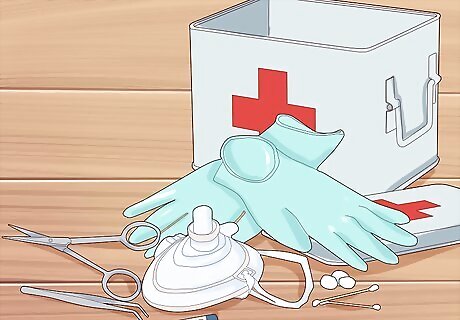
Add basic medical tools. Be ready for plucking splinters, cutting bandages, and other first aid activities without having to rummage through the junk drawer. Place these in a marked zip-close bag as well. Definitely include: Small, sharp scissors Tweezers Two pairs of non-latex gloves Non-mercury oral thermometer Cotton balls and swabs CPR breathing barrier mask Instant cold compress First aid instruction booklet Hand sanitizer Cleansing wipes (for external cleaning only) Zip-close plastic bags (to dispose of medical waste)
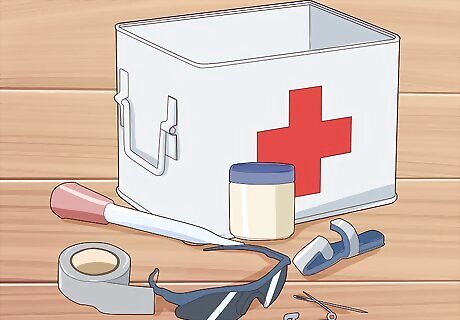
Consider adding additional tools as well. If you have a roomy kit, think about adding non-essential but useful medical tools in an additional, marked bag. These might include: Eye protection Prepackaged space (warming) blanket Aluminum finger splint Duct tape Petroleum jelly Sewing needle Safety pins Turkey baster (for flushing out wounds)
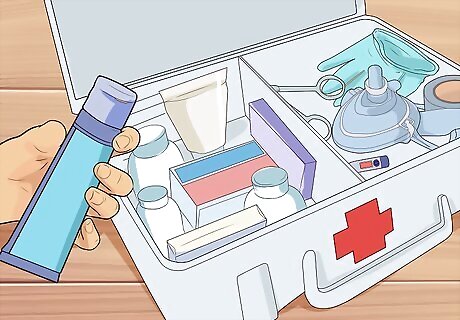
Make a separate section for medications. Keep these separate from bandages and tools, and clearly marked. Check expiration dates regularly. You should be able to find travel / trial / first aid kit sized packs of most of the following: Aloe vera gel Calamine lotion Anti-diarrheal medication Laxatives Antacids Antihistamines Pain relievers (aspirin, ibuprofen, and acetaminophen) Hydrocortisone cream Cough / cold medicine
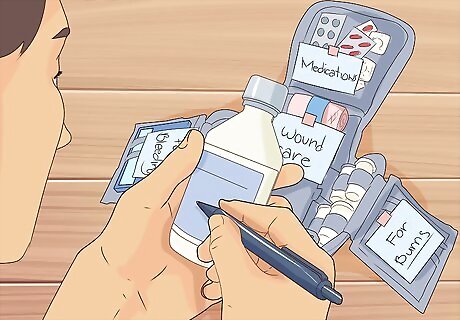
Personalize your kit with family medications. Consider including small doses of prescription medications for each member of your family, especially in car / travel kits, in small, clearly marked containers with instructions for each. Keep close track of prescription medication expiration dates. If anyone in your family has severe allergies and a prescription for an epi-pen, keep one in the home kit with instructions, so a visitor could provide assistance in an emergency. Even for home kits, keeping a small stock of personalized medical supplies — a bee sting kit, for example — can prove useful if your medicine cabinet supply happens to be depleted.
Making Mobile Kits
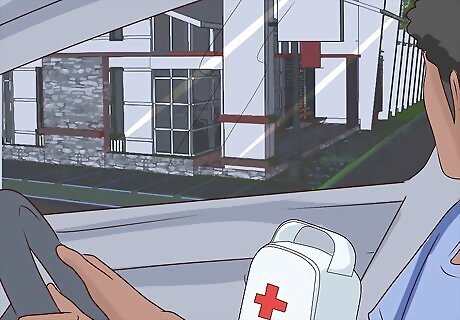
Always have a car/travel kit. You should always have a first aid kit in your home, and you should always have one in each car you own. Some cars come with their own first aid kit, but it should be checked and supplemented so it is complete. A travel kit should be similar to the home version, but to make it ready for the road, consider adding items such as: a flashlight with batteries; waterproof matches; a solar/crank charger for phones; sunscreen, insect repellant; a whistle; phone numbers for your physician, poison control, etc.; and medical consent and history forms for each family member. Make your car kit accessible as well; don't bury it in the spare tire well under your trunk floor. See also How To Pack a First Aid Kit for Your Car for more ideas.
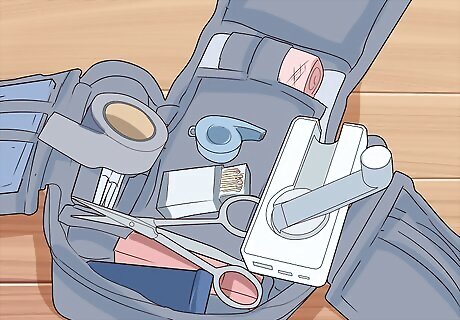
Create a camping kit if you're heading outdoors. See How to Make a First Aid Kit for Camping for more ideas. A camping kit will be similar to a car kit, but be extra sure to have a good pair of scissors; waterproof matches; a space blanket; duct tape; a solar/crank phone charger; and a whistle. Include water purification tablets as well, to protect yourself should you need to drink from a body of water.
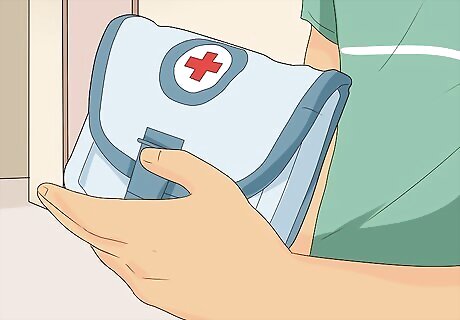
Pack a purse/compact first aid kit. It's nice to have a sizable kit with a bit of everything, but a smaller, easily portable kit can be with you nearly all the time. For help in maximizing your first aid kit while minimizing its size, see How to Make a Compact First Aid Kit. One commercially-available purse kit winnows down the contents to one ointment packet, three cleansing wipes, two gauze pads, and 10 bandages. Adding small amounts of your most commonly-used medications to a small zip-close bag would make for a solid first aid kit that should fit nicely in a purse, diaper bag, backpack, etc.
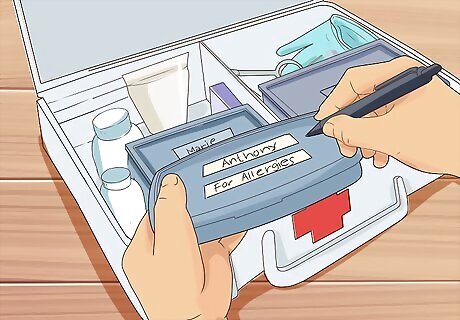
Set up special kits as needed. If anyone in your family has special medical needs, prepare travel kits that are clearly marked and specifically designed to treat his or her needs. An allergy emergency kit is probably the most common example. Visit How to Create an Allergy Emergency Kit for more information. For such a kit, use a small, durable, water-resistant container, clearly marked with "ALLERGY EMERGENCY KIT" along with the person's name. Work with your doctor to determine what medications should be included. Antihistamines (such as Benadryl), Prednisone, and/or epi-pens are the most likely inclusions. Include two or more doses of any medications, in case of a delay in medical intervention. On a durable, possibly laminated, piece of paper or notecard, clearly write/print out all instructions for how and when to use the medications. Also include the physician's phone number and any important patient information (any additional allergies, for instance).

















Comments
0 comment